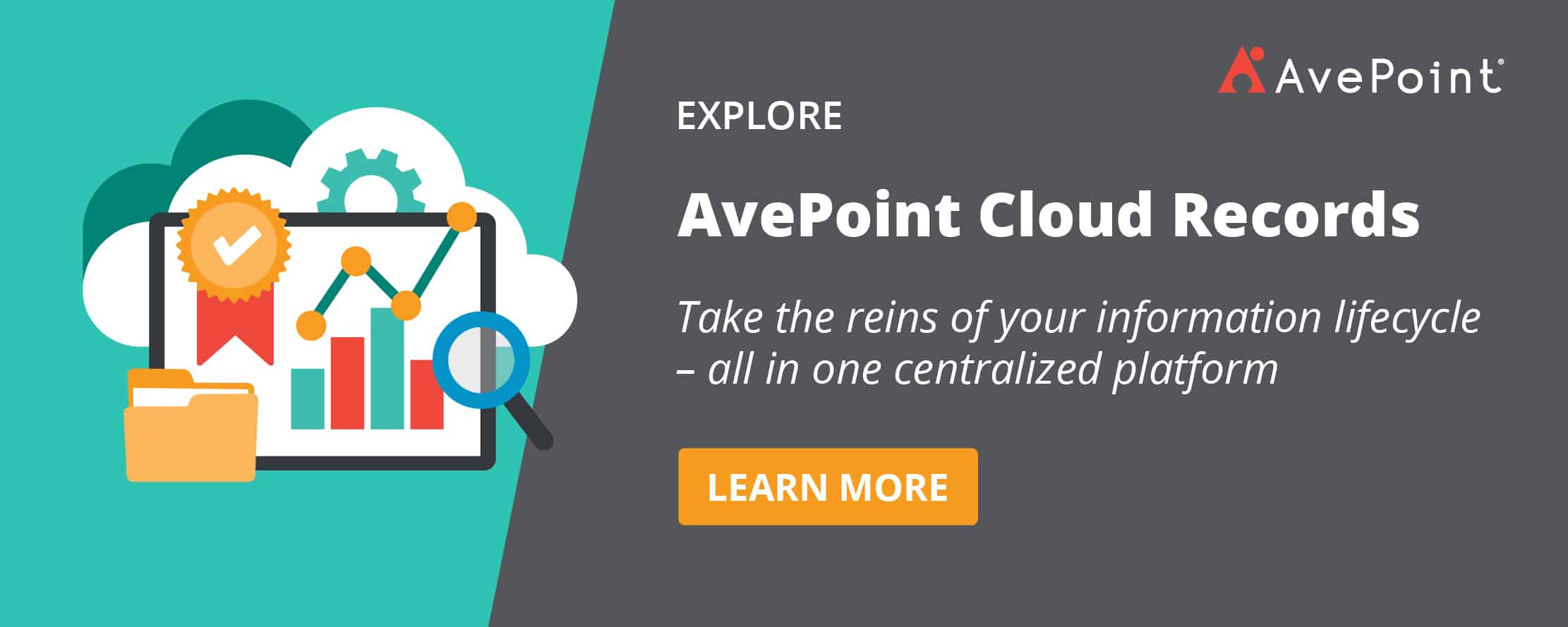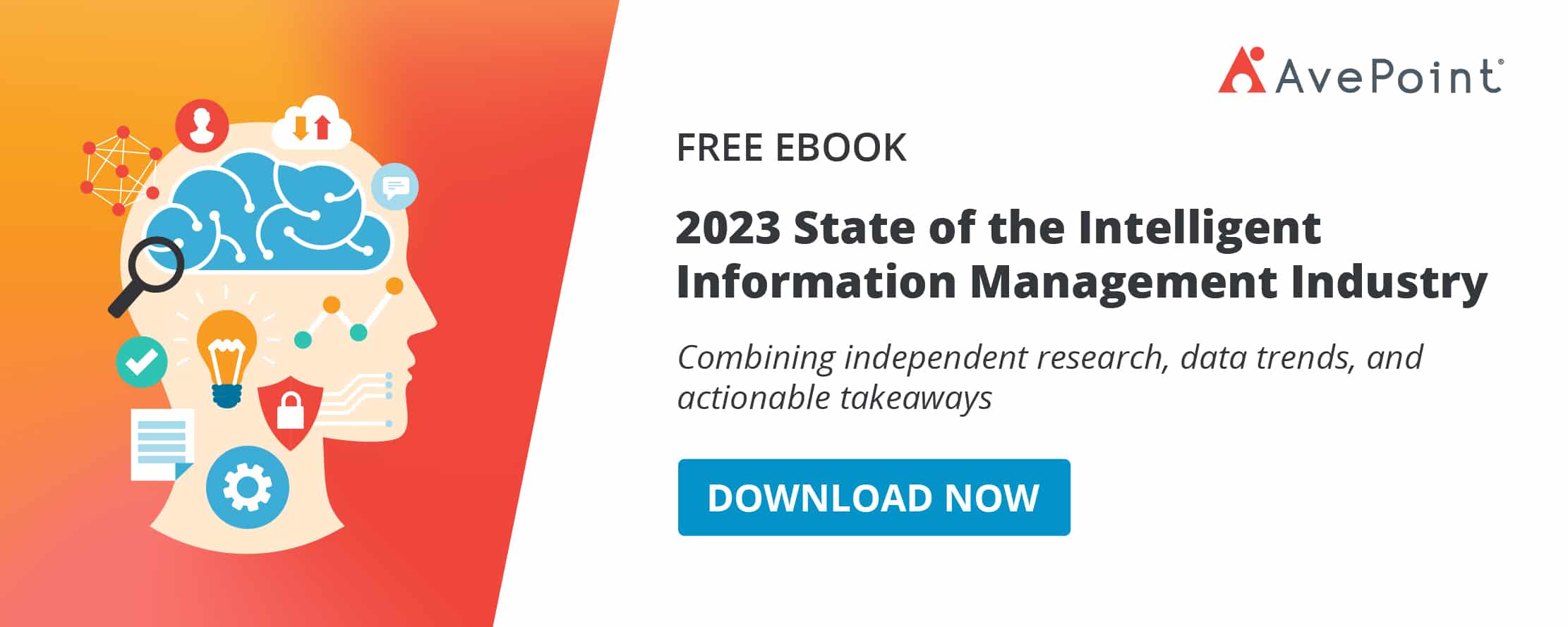An Inside Look at Information Management in 2023 and Beyond


Information management — the discipline of collecting, managing, and disseminating content and data — is at a critical inflection point, moving beyond a strict focus on governance, risk, and compliance and embracing a broader, more holistic view of information management as a critical factor in organizational excellence.
Spurred by pandemic-driven digital transformation, organizations are continuing to create data at an unprecedented rate, resulting in time-consuming tasks, higher storage costs, and greater risks. According to Microsoft, customers add over 2 billion new files to Microsoft 365 and SharePoint each workday. From compliance to cost savings, information management has become a strategic imperative.
Over the past ten years, the Association for Intelligent Information Management (AIIM) has periodically assessed the state of the information management industry. Last year, the report highlighted “a singular focus on the customer.” Despite a universal acknowledgment of the importance of digital transformation and the customer experience aspect thereof, respondents noted that organizations’ approaches to information management don’t always lend themselves to supporting this single most important transformation driver.
This year’s report looks at the current state and future trends in information management, based on benchmark data from 2013, 2018, and now — 2023. “Information management is far more complex and advanced than a decade ago,” said AIIM President and CEO Tori Miller Liu. “This report provides the data behind the fundamental shift we are experiencing as well as recommendations for where organizations can focus on getting the best out of technology, processes, and people.”
AvePoint is honored to present this year’s report in partnership with AIIM. Please see below for an excerpt.
—
Information Management Goals
Looking back to the 2013 AIIM data, we find that the primary drivers for document and records management projects were:
- compliance and risk (38%)
- costs and productivity (38%)
- collaboration (16%)
- customer service (8%)
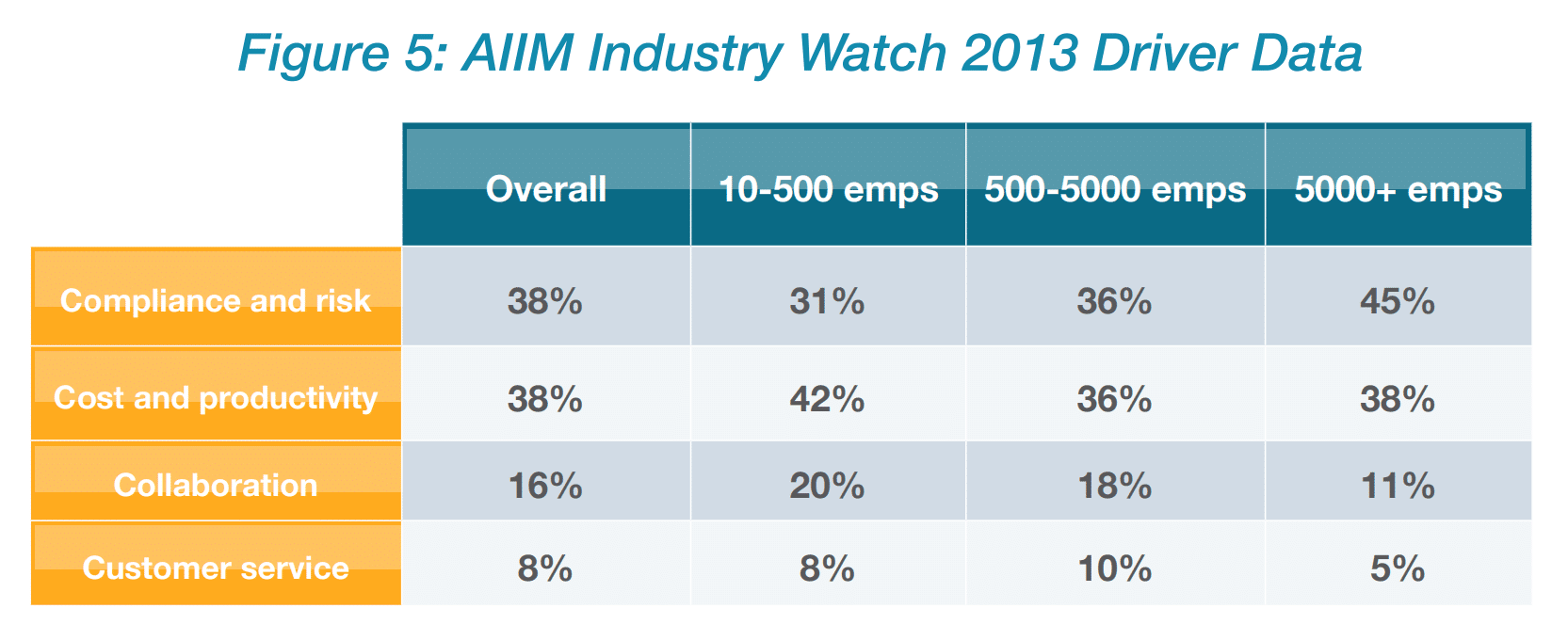
Ten years later, we see a similar set of drivers, including digital transformation, of course, but the emphasis has shifted. Compliance now stands head and shoulders ahead of the other drivers at all three levels we surveyed — organizational, departmental, and individual. Customer service, digital transformation, and collaboration all bunch together with slightly varying importance at the three levels, but all show increased importance versus the 2013 data.
However, focusing on costs and productivity as a goal is now significantly less. This is an interesting evolution. In the early days of document management and ECM, many vendors sold their systems based on reduced costs (e.g., reduced filing cabinets and document storage costs) and increased productivity — to limited success. However, the emphasis now appears to be on more tangible business goals such as collaboration and customer service.
Another explanation could be that due to COVID, organizations were forced to deliver digital transformation and remote working — almost irrespective of the cost. The focus on compliance and risk in the wake of the pandemic-fuelled rush to enable remote working is natural — organizations need to properly secure and govern the tools they are now using.
And of course, the economy always influences decisions. Anecdotally, we hear that many organizations invest in information management during tough economic times as potential compliance fines would be hard to bear — in good financial environments, they are less painful. Irrespective, we fully expect the more proactive drivers such as productivity and collaboration to regain ground on the more defensive compliance and risk activities in the near future.
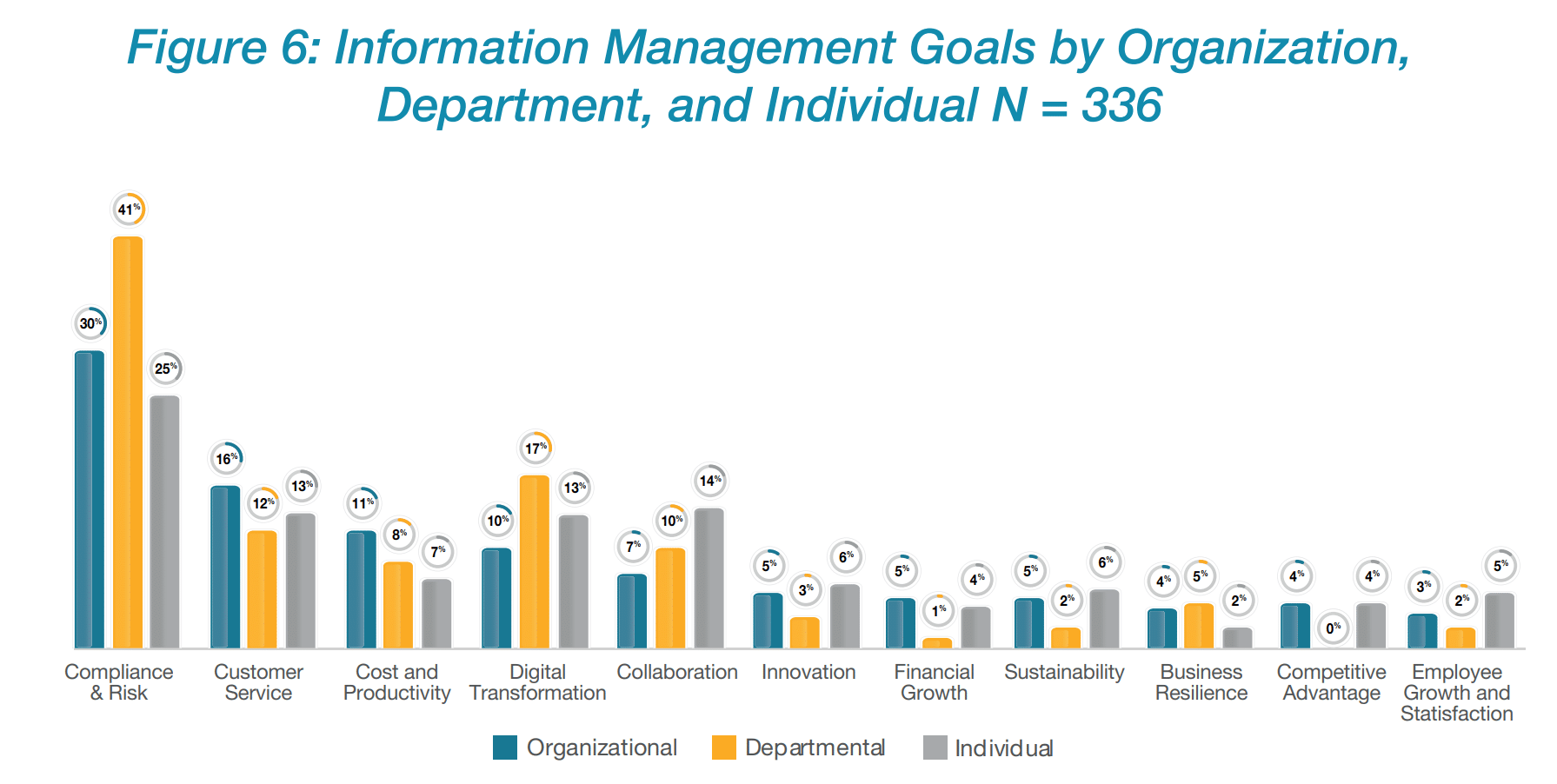
Digital Transformation
The COVID-19 pandemic drove the digital transformation agenda forward within most organizations. The AIIM 2013 Industry Watch didn’t mention Digital Transformation (DT) — it wasn’t a factor at the time — but in the 2018 report, DT was well underway. The 2013 research shows us that 65% of organizations have experienced significant digitization, with 7% completely digital, compared to 46% and 4% in 2018.
Five years ago, 22% were planning their digital transformation but hadn’t started. In 2023, that number has reduced to just 5% who are aware of the need and are making basic steps. This is a significant improvement, but still concerning that 5% of respondents currently do not have digital processes.
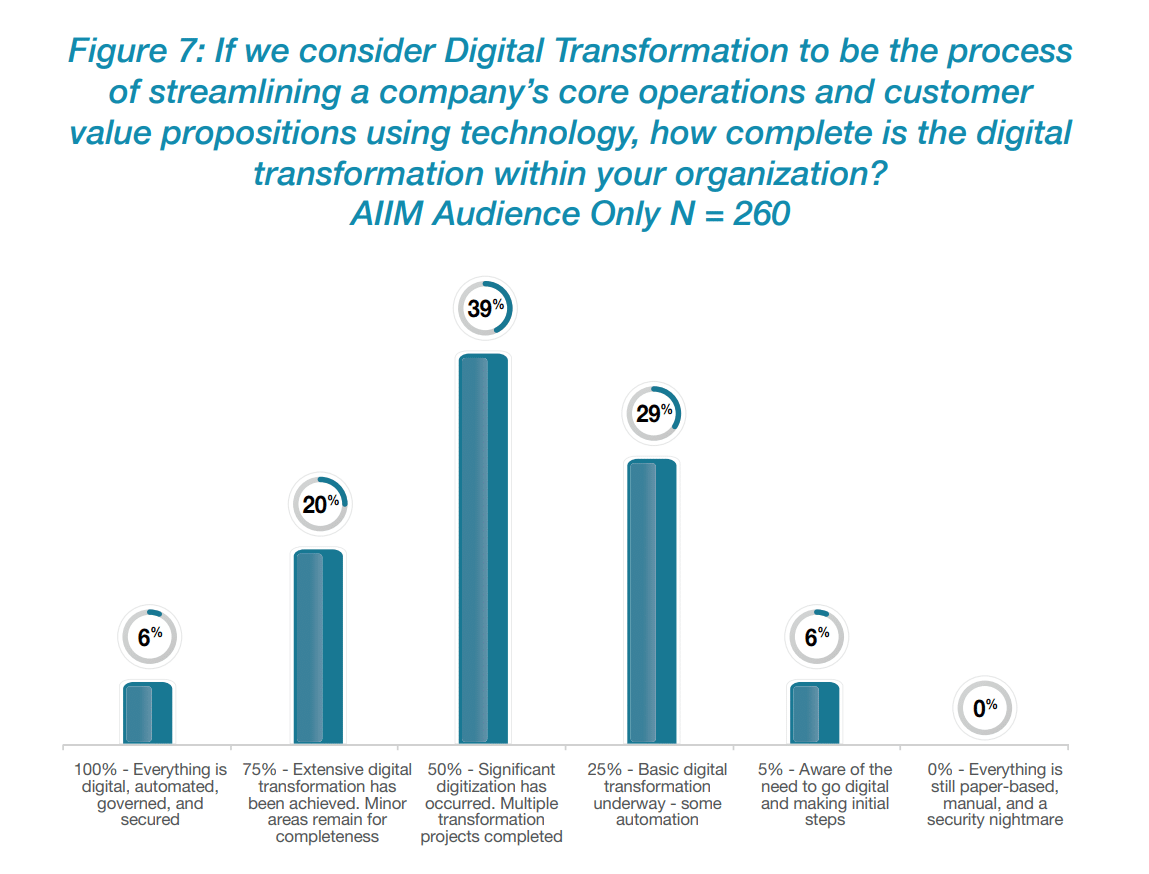
Digital Transformation Roadblocks
For all except those organizations that have everything digital, automated, governed, and secured, the roadblocks to achieving such a nirvana are clear. As described in 2022 AIIM research, the three primary challenges are a lack of money, focus, and culture. Ideally, organizations would maintain their transformation momentum and complete as much of their digitalization as possible; however, there is the possibility that the rush of digitization during the pandemic will lead to a subsequent slowdown in activity. An economic downturn could also impact the pace of change.
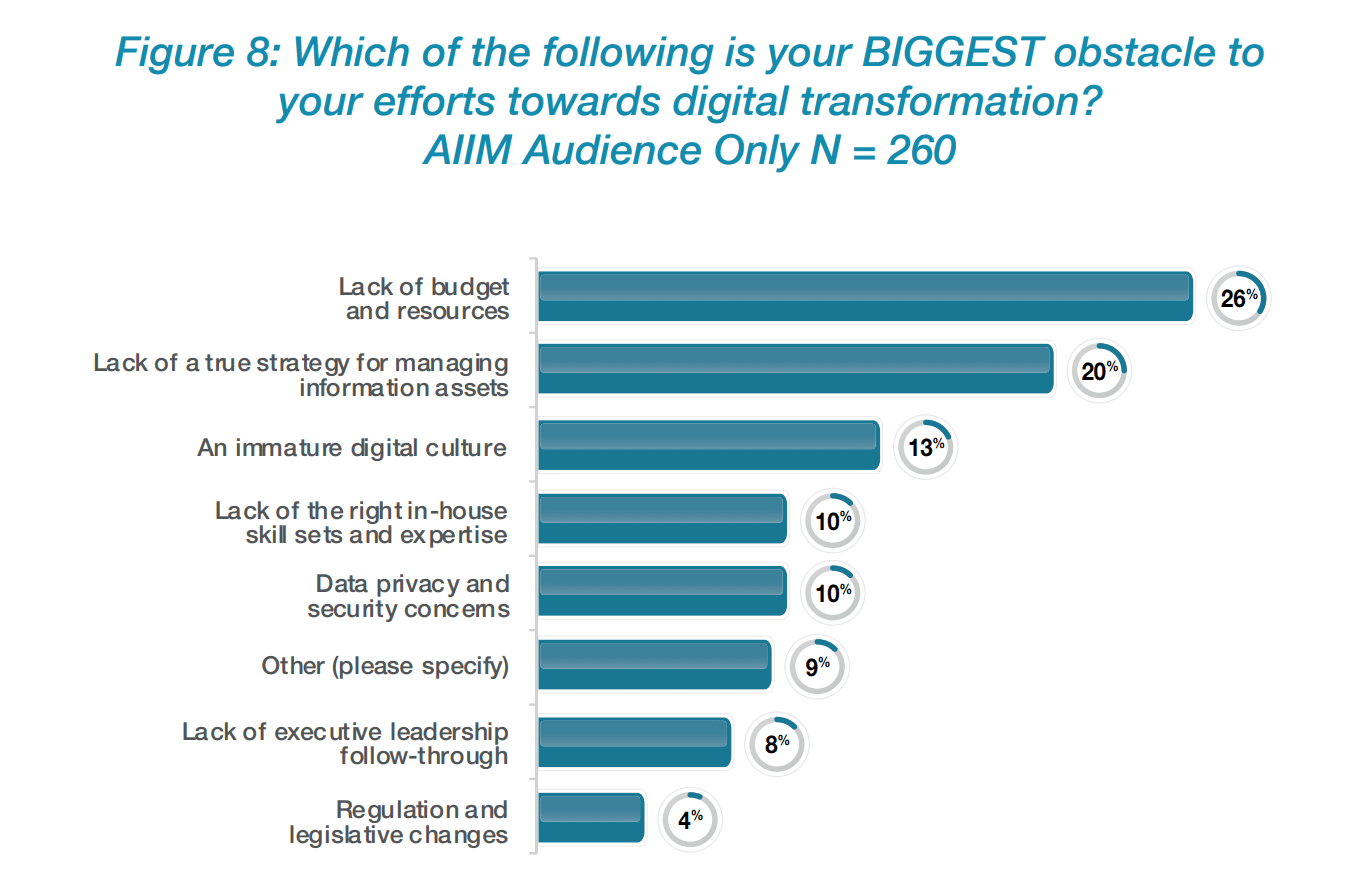
AvePoint’s Take
Technology is a powerful enabler, but it must be preceded by good design to ensure the most successful outcomes, in all facets (end-user experience, compliance, administration, etc.) can be reached. As they progress along their digital transformation journey, organizations should consider these three key things:
- A new way of working also means a new way of approaching records and information management.
- End user experience is critical. End users working in a way that is comfortable and appropriate to their business processes is a critical part of achieving compliance with records management standards.
- Good design should always precede the implementation of technology. Without it, you’ll end up with substandard systems that don’t meet expectations.
Information Management Systems
The average number of content management, document management systems, and record management systems within organizations has grown since 2013 when there was an average of 3.14 systems per organization. This rose to 3.94 in 2018. In 2023, the average number of information management systems is almost 5 (4.95) per organization.
Information Management Systems Growth
Looking more deeply into the data, fewer organizations have 0-3 systems than ever before, and we see some growth in the usage of 4-6 systems. However, the most explosive growth is in those using 7-10 systems, which has risen from 3.6% in 2013 to 6.2% in 2018, and now 14.42% in 2023 — approximately doubling every five years.
These figures can be explained in various ways:
- It is now easier than ever to deploy cloud-based information management systems without the involvement of the IT department.
- There is an increased availability of vertical and horizontal-specific solutions — allowing organizations to deploy numerous smaller solutions versus a single platform.
- Replacement solutions for legacy ECM platforms sometimes require multiple tools to achieve the same level of functionality.
In the past, the increased number of content systems may have been seen as a bad thing, increasing the likelihood of information silos, and leading to governance and compliance headaches. However, this is not an issue if the new systems integrate well with each other and the business applications and processes within the broader organization.
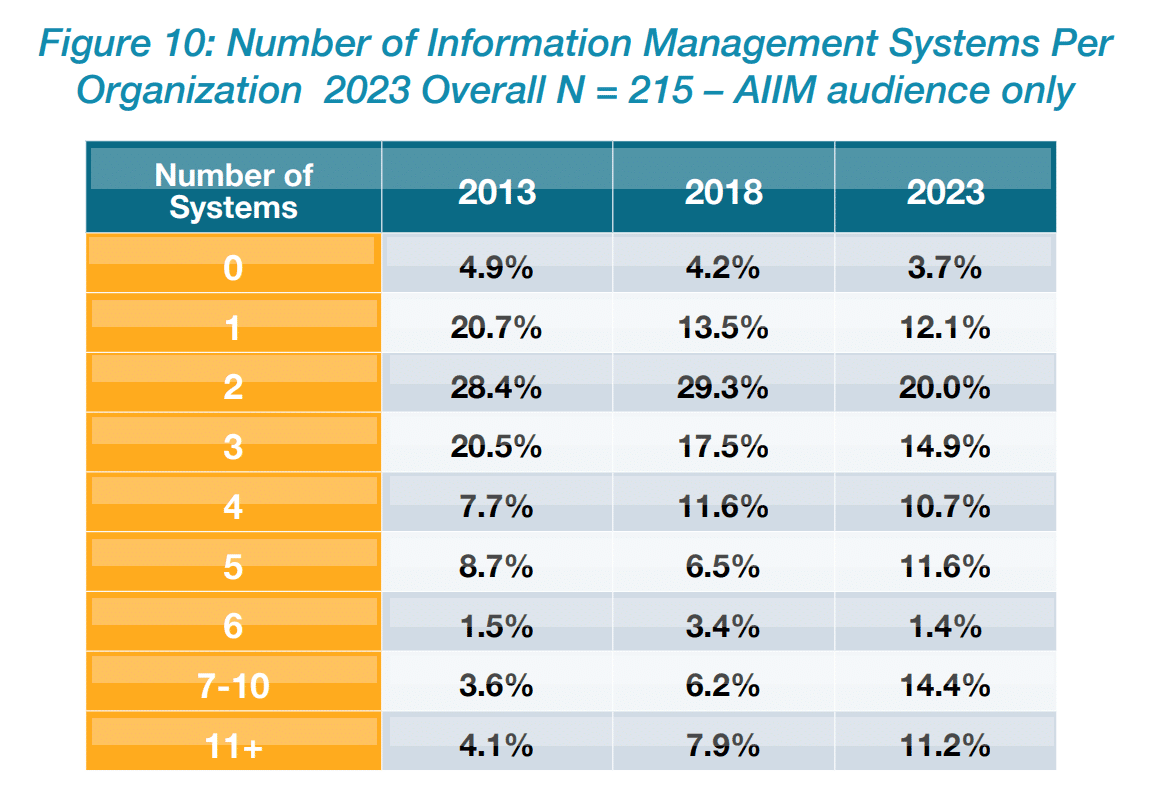
To read more, download your complimentary copy of the 2023 State of the Intelligent Information Management Industry report, presented by AvePoint in partnership with AIIM.

Antoine Snow is a senior solutions manager at AvePoint, leading the Public Sector business unit. He has held various positions in IT over the past several years ranging from front-end web developer to Microsoft 365 Service Owner. In his current role, Antoine focuses on governance and adoption challenges plaguing the modern workplace and helping government organizations understand the components of a governance strategy and its implementation. Antoine's views on these topics can be found in various blog posts and has been the focus of one-to-one workshops.
